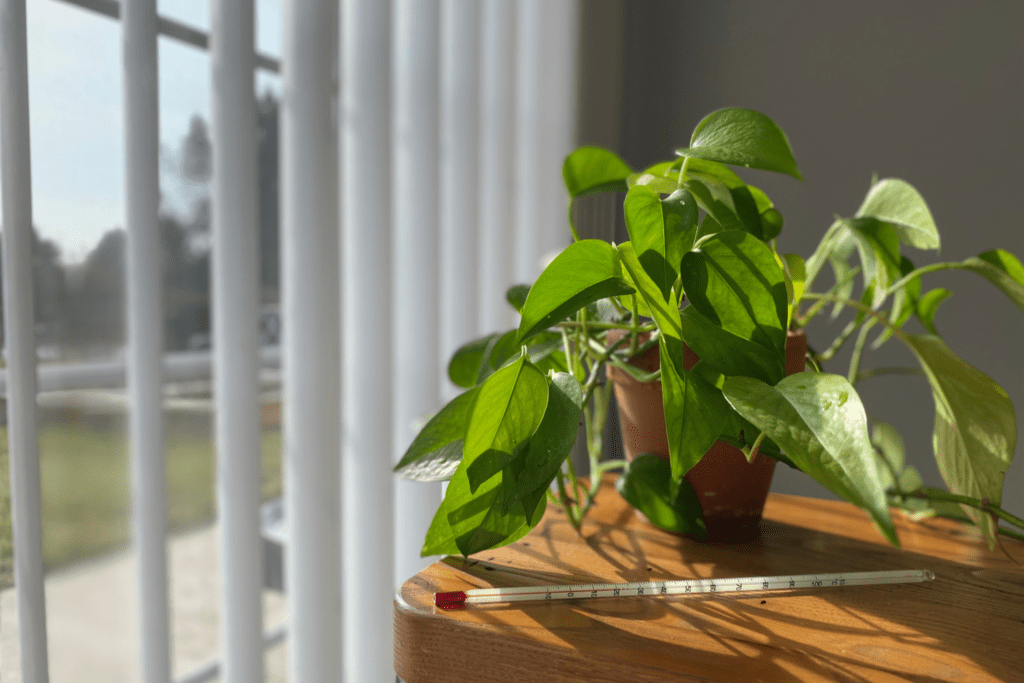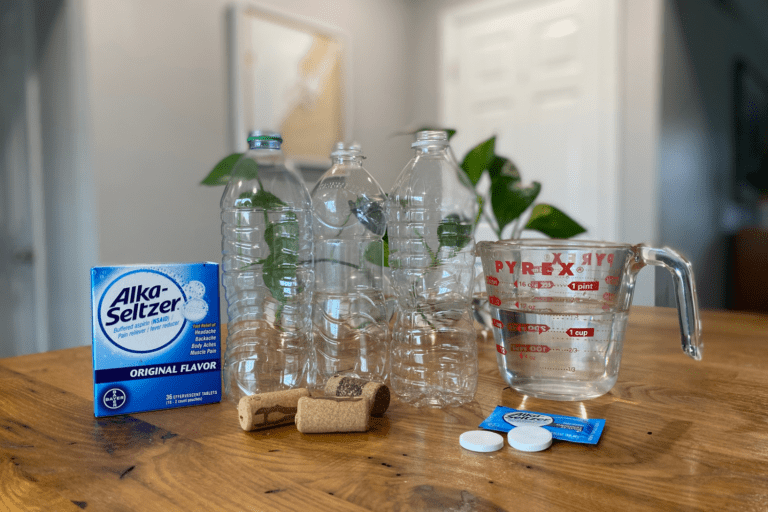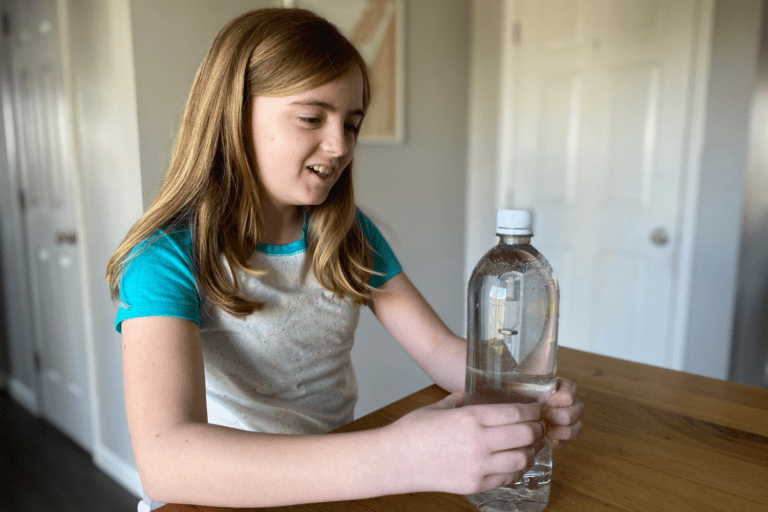How to Understand the Science Behind Heat Pumps
Understanding how heat pumps work is a practical application of basic chemistry principles and can be a fantastic way to apply students’ knowledge of evaporation and condensation. Read on to learn the science behind how heat pumps work, why they are more energy efficient than traditional heating and air conditioning systems, and how you can apply that knowledge to your classroom or learning environment.

What is a heat pump?
A heat pump is a device that uses a small amount of energy to move heat from one location to another. It operates on the principle of refrigeration, where a refrigerant is used to absorb heat from one place (the source) and transfer it to another place (the sink). The heat pump can be reversed to either heat or cool a building, depending on the desired direction of heat flow.
Heat pumps are commonly used for heating and cooling buildings and are typically more energy-efficient than traditional heating and cooling systems because they move heat rather than generate it.
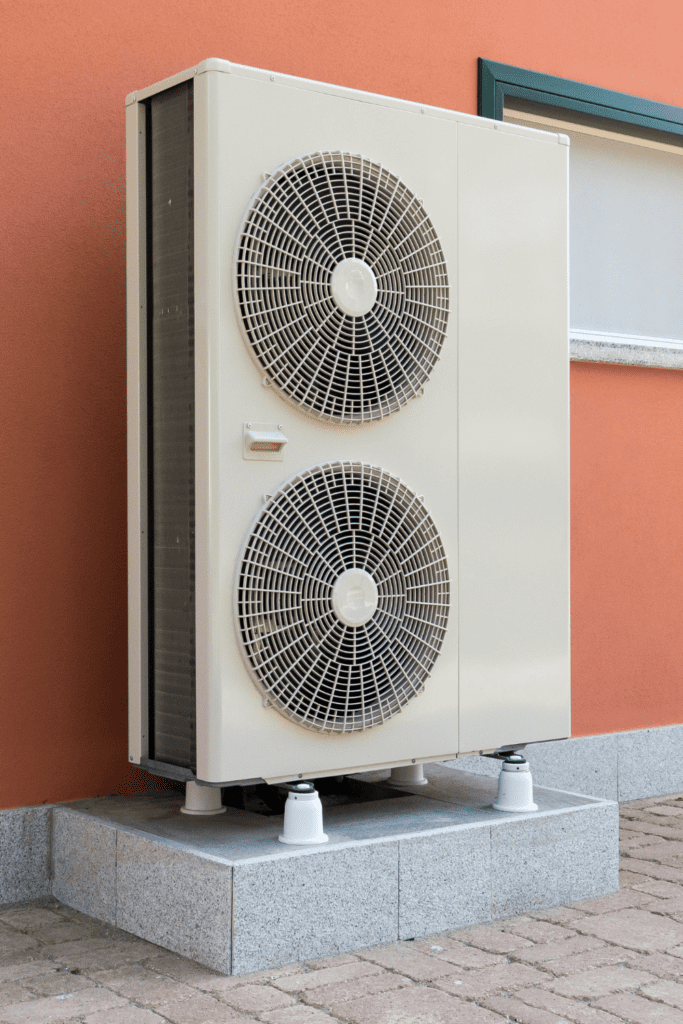
How do heat pumps work?
Heat pumps work by using a refrigerant to absorb heat from one place (the source) and transfer it to another place (the sink) through a cycle of evaporation and condensation. The refrigerant evaporates at the source, where it absorbs heat, and then condenses at the sink, where it releases heat. This process can be reversed to either heat or cool a building, depending on the desired direction of heat flow. Heat pumps are typically more energy efficient than traditional heating and cooling systems because they move heat rather than generate it.
What is a refrigerant?
A refrigerant is a substance used in refrigeration and air-conditioning systems to transfer heat from one place to another. It acts as a coolant, absorbing heat from the interior of a building or appliance and expelling it to the outside. Refrigerants have a low boiling point, which allows them to change from a gas to a liquid and back again, thus absorbing and releasing heat. Common refrigerants include hydrofluorocarbons (HFCs), chlorofluorocarbons (CFCs), and hydrochlorofluorocarbons (HCFCs). Some older refrigerants, such as CFCs, are potent greenhouse gases and are being phased out due to their contribution to climate change.
How does a refrigerant work in a heat pump to heat or cool a space?
Refrigerants are used in heat pumps as a medium for heat transfer. In a heat pump system, refrigerants are circulated through a closed loop of tubing between the indoor and outdoor units, allowing the transfer of heat from one place to another.
When the heat pump is in cooling mode, the refrigerant evaporates in the indoor coil and absorbs heat from the indoor air. This refrigerant vapor is then compressed by the compressor and sent to the outdoor unit where it releases its heat to the outdoor air through the outdoor coil. The refrigerant then condenses back into a liquid and returns to the indoor unit to start the process again.
When the heat pump is in heating mode, the process is essentially reversed. The outdoor coil acts as the evaporator and the indoor coil acts as the condenser. The refrigerant absorbs heat from the outdoor air and releases it indoors, warming the indoor air.
Refrigerants used in heat pumps are carefully selected for their ability to transfer heat efficiently, as well as their environmental impact. Historically, chlorofluorocarbons (CFCs) and hydrochlorofluorocarbons (HCFCs) were commonly used as refrigerants, but these are being phased out due to their ozone depletion potential. Today, hydrofluoroolefins (HFOs), hydrochlorofluorocarbons (HCFCs), and hydrofluorocarbons (HFCs) are more commonly used as refrigerants in heat pumps.
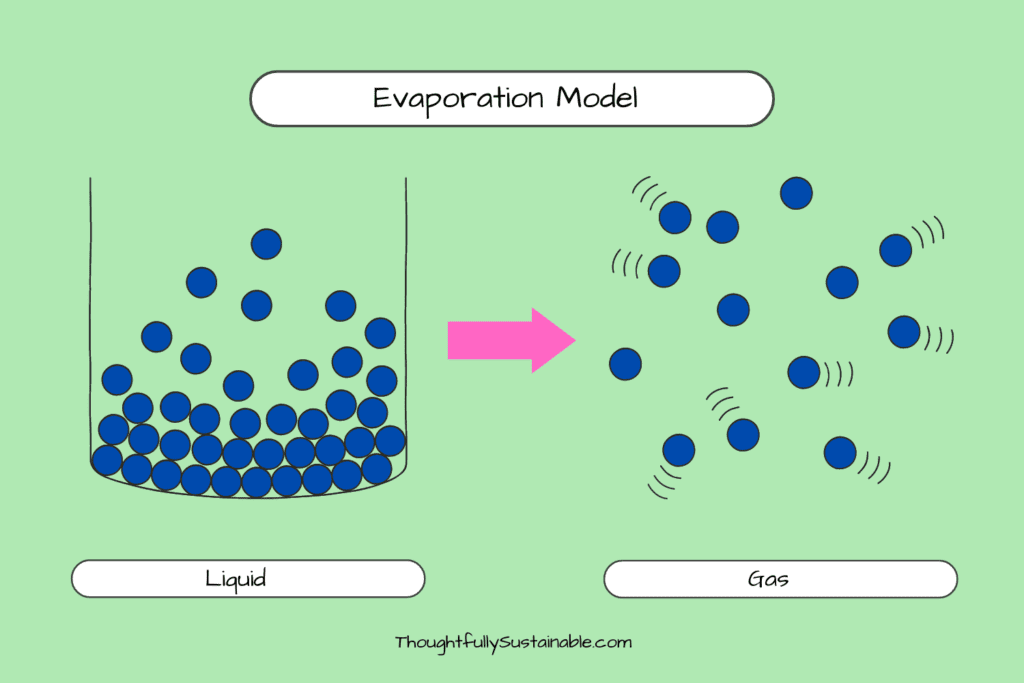
What is evaporation?
Evaporation is the process by which a liquid changes into a gas. It occurs when the molecules at the surface of a liquid absorb enough energy to escape into the air as vapor. The energy required for evaporation is typically supplied by the surrounding air, which must be warm enough to provide enough energy to the liquid to make this transition.
Evaporation is a natural process that occurs in the atmosphere and plays a crucial role in the water cycle. For example, when water from the ocean evaporates, it rises into the atmosphere and forms clouds. The clouds can then release the water back to the earth as precipitation, either as rain or snow.
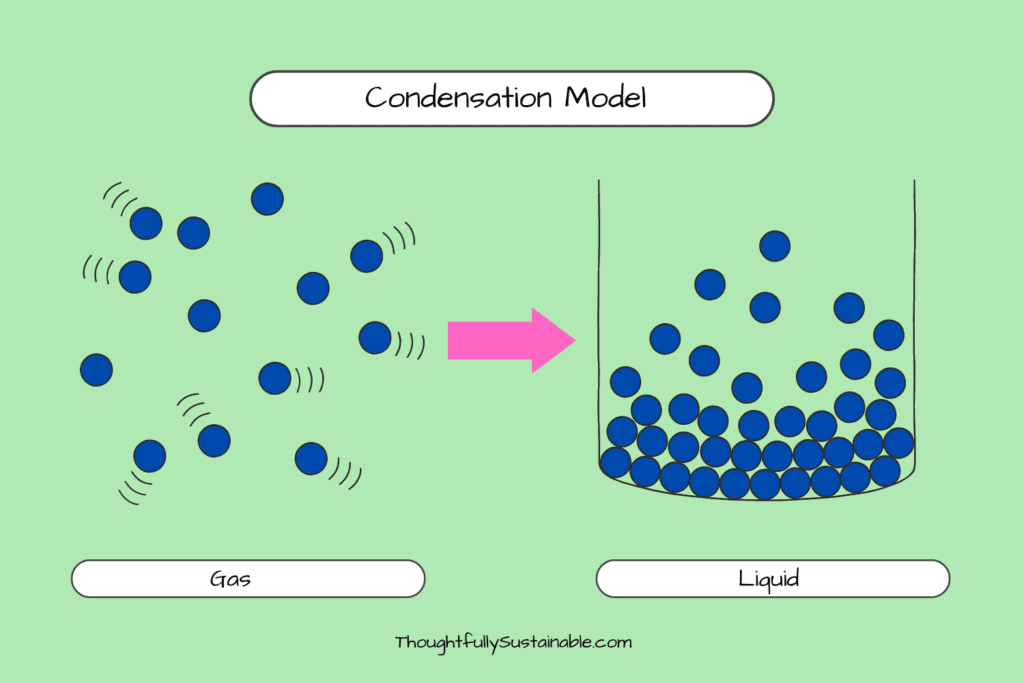
What is condensation?
Condensation is the process by which a gas changes into a liquid. It occurs when the molecules in a gas lose enough energy to condense and become a liquid. This typically happens when the gas is cooled below its condensation point, or the temperature at which it changes from a gas to a liquid.
Condensation is the reverse of evaporation and is a crucial part of the water cycle. For example, when water vapor in the atmosphere cools, it can condense into droplets to form clouds. If the droplets continue to grow, they can eventually fall back to the ground as precipitation, such as rain or snow.
Condensation can also occur in everyday life, such as on a cold glass of water on a hot day. The warm air in contact with the cold glass loses energy and cools, causing the water vapor in the air to condense into droplets on the surface of the glass.
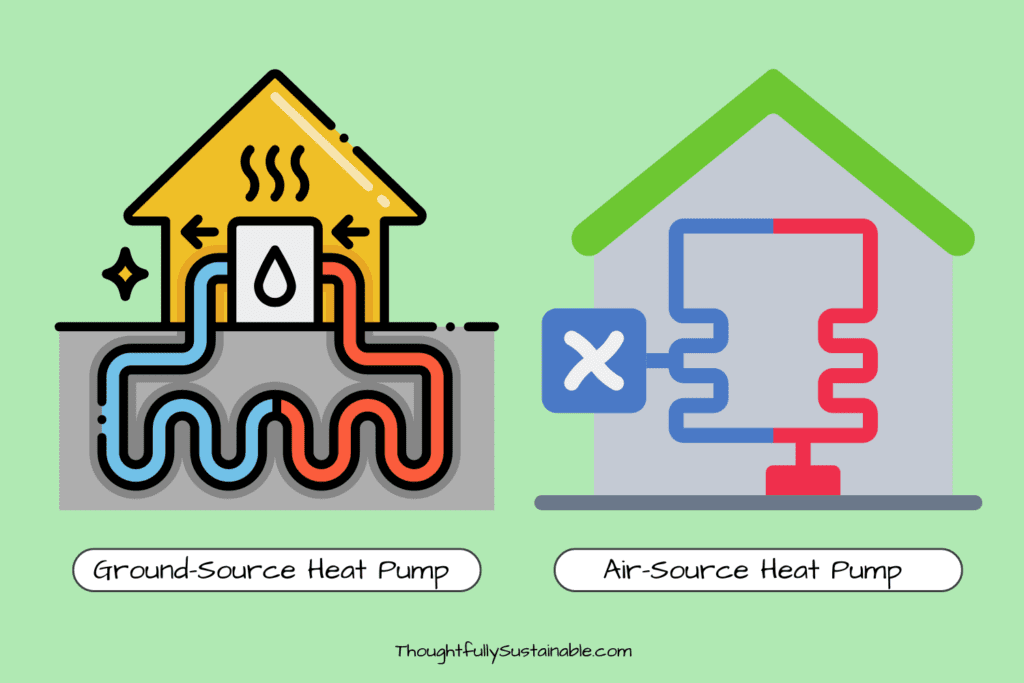
Are there different types of heat pumps?
Yes, there are several types of heat pumps:
- Air-source heat pumps: use air as the heat source/sink and are the most common type of heat pump.
- Ground-source heat pumps (also known as geothermal heat pumps): use the ground as the heat source/sink. They are more energy efficient and have a longer lifespan compared to air-source heat pumps.
- Water-source heat pumps: use water as the heat source/sink and are commonly used in commercial and industrial applications.
- Hybrid heat pumps: use a combination of a heat pump and a traditional heating system (such as a furnace) to provide heating and cooling.
What type of heat pump is commonly used in residential homes?
The most common type of heat pump used in residential homes is the air-source heat pump. Air-source heat pumps use air as the heat source and sink, making them relatively simple and cost-effective to install. They are also more versatile than other types of heat pumps and can provide both heating and cooling.
Ground-source heat pumps (also known as geothermal heat pumps) are becoming increasingly popular, especially in areas with more consistent ground temperatures. They are more energy-efficient and have a longer lifespan compared to air-source heat pumps, but they can be more expensive to install due to the requirement for a ground loop.
Water-source heat pumps and hybrid heat pumps are less common in residential homes, but they can be used in some applications.
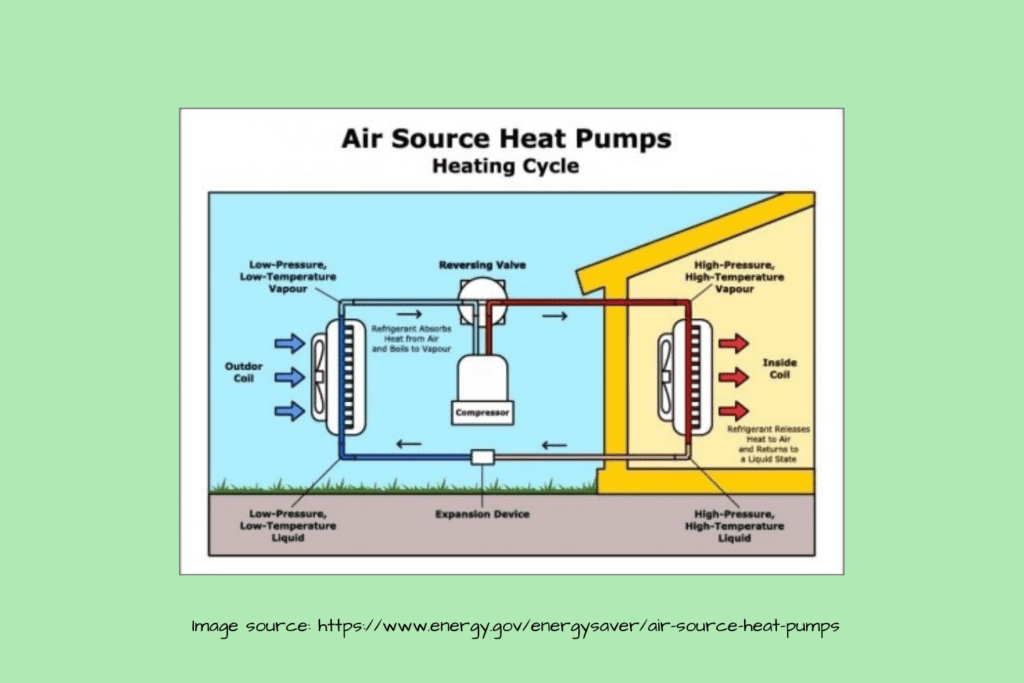
How does an air-source heat pump work?
An air-source heat pump (ASHP) is a type of heat pump that uses the outside air as the source of heat energy. It works by drawing heat from the air outside the building, compressing it to a higher temperature, and then distributing it inside to provide heating and hot water.
The ASHP system consists of an outdoor unit, an indoor unit, and a control system. The outdoor unit contains a heat exchanger, a compressor, and a fan. The heat exchanger absorbs heat from the outside air and the compressor increases the temperature of the refrigerant. The indoor unit contains a heat exchanger that transfers the heat to the air or water that circulates inside the building.
In the heating mode, the ASHP draws heat from the outside air, even when the temperature is as low as -13°F, and delivers it inside to provide heating. In the summer, the ASHP can also operate in reverse to provide cooling by removing heat from inside the building and expelling it outside.
ASHPs are efficient, environmentally friendly, and cost-effective alternatives to traditional heating and cooling systems. They consume less energy, emit fewer greenhouse gases, and can reduce energy bills compared to electric or gas-fired systems.
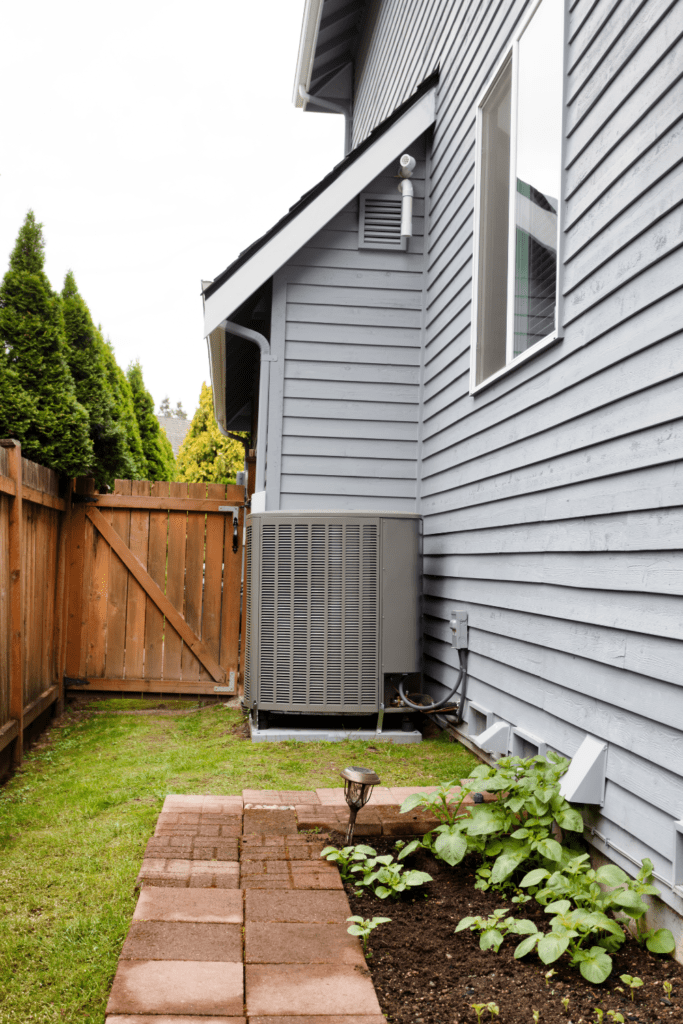
Are air-source heat pumps loud?
The noise level of an air-source heat pump can vary depending on the specific model and manufacturer. Some air-source heat pumps can be relatively quiet, while others can produce a significant amount of noise. The noise level is typically determined by the size and design of the unit, as well as the materials used in its construction.
In general, larger air-source heat pumps tend to be quieter than smaller ones. High-end models may also feature sound-dampening materials and design features to reduce noise. It’s important to consult with a licensed HVAC contractor or the manufacturer of the heat pump to determine the specific noise level of a particular unit.
In some cases, air-source heat pumps can produce more noise than other types of heat pumps, such as ground-source (geothermal) heat pumps, due to the vibration and noise generated by the fan and compressor. However, many air-source heat pump systems are designed to operate quietly and can be installed with noise-reducing measures, such as soundproofing materials or proper installation techniques, to minimize the amount of noise produced.
How does a ground-source heat pump work?
A ground-source heat pump (GSHP) is a type of heat pump that uses the ground as a source of heat energy. It works by drawing heat from the ground, compressing it to a higher temperature, and then distributing it inside to provide heating and hot water.
The GSHP system consists of an indoor unit, a ground loop, and a control system. The indoor unit contains a heat exchanger and a compressor. The ground loop is a network of pipes buried in the ground that circulates a mixture of water and antifreeze. The pipes absorb heat from the ground and transfer it to the heat exchanger in the indoor unit.
In the heating mode, the GSHP draws heat from the ground and delivers it inside to provide heating. In the summer, the GSHP can also operate in reverse to provide cooling by removing heat from inside the building and expelling it into the ground.
GSHPs are efficient, environmentally friendly, and cost-effective alternatives to traditional heating and cooling systems. They consume less energy, emit fewer greenhouse gases, and can reduce energy bills compared to electric or gas-fired systems. Additionally, GSHPs are well suited for regions with moderate climates and are ideal for use in homes, offices, schools, and other buildings.
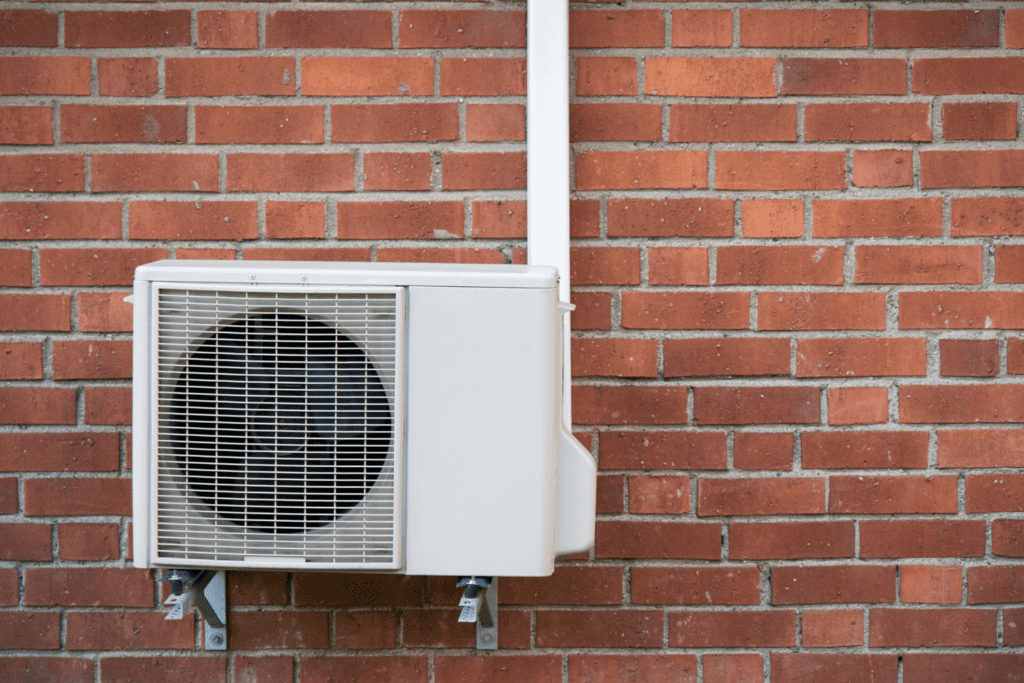
Are heat pumps expensive to install?
The cost of installing a heat pump varies depending on several factors, including the type of heat pump, the size of the heating and cooling system, and the complexity of the installation. On average, a ground-source heat pump system can cost $3,000 to $8,000 or more, while an air-source heat pump system can cost $2,500 to $7,000 or more.
While heat pumps can be more expensive to install compared to traditional heating and cooling systems, they can be more cost-effective in the long run due to their increased energy efficiency. Additionally, some heat pumps may be eligible for government incentives or rebates, which can reduce the upfront cost of installation.
Compare the energy savings a heat pump will provide to a home versus other HVAC systems.
Compared to traditional heating and cooling systems, heat pumps can provide significant energy savings by using less energy to transfer heat, rather than generating it. The exact amount of energy savings will depend on several factors, such as the climate, the size and efficiency of the heat pump, and the insulation and energy efficiency of the building.
On average, a heat pump can provide 30-50% energy savings compared to a traditional heating and cooling system. In some climates, the savings can be even higher. For example, in a mild climate, a heat pump can provide heating and cooling with only a small amount of auxiliary heating, whereas in a cold climate, a heat pump may need to use more auxiliary heating.
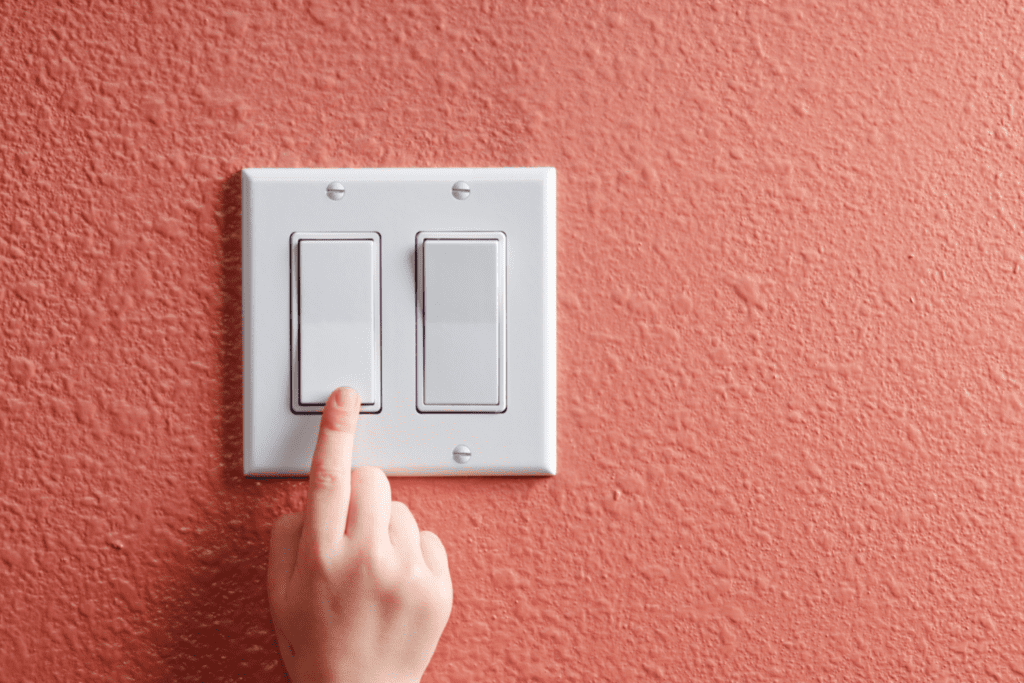
What are other ways that you can make your home more energy efficient?
Here are some additional ways to make your home more energy efficient:
- Insulation: Adding proper insulation to your walls, attic, and floors can reduce heat loss in the winter and heat gain in the summer, improving your home’s energy efficiency.
- Window treatments: Installing energy-efficient windows, window film, or shading devices can help reduce heat transfer through your windows.
- Lighting: Replacing incandescent light bulbs with energy-efficient LED or CFL bulbs can reduce your lighting-related energy use.
- Water heating: Installing a tankless water heater or a heat pump water heater can be more energy efficient than traditional storage water heaters.
- Appliances: Upgrading to Energy Star-rated appliances can help reduce your energy use for appliances such as refrigerators, washing machines, and dishwashers.
- Weatherization: Sealing air leaks around windows, doors, and other areas where air can escape can help improve your home’s energy efficiency.
It’s important to consider the climate, your specific needs, and the cost-effectiveness of each of these measures when making energy-efficiency improvements to your home. Click here to learn more about building sustainable energy use habits in your home.
Energy efficiency experiment for kids.
Searching for a science experiment that explores ways to increase indoor energy efficiency? Test how window coverings affect room temperature with this free, simple science activity for kids.
